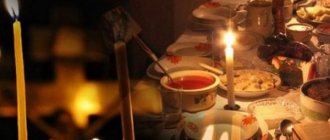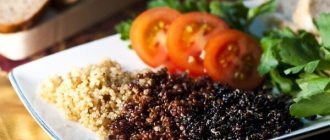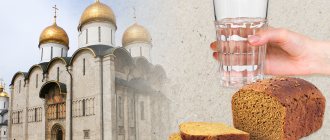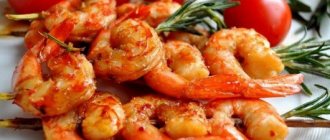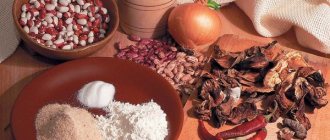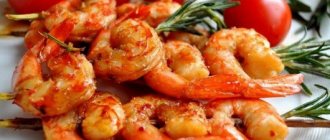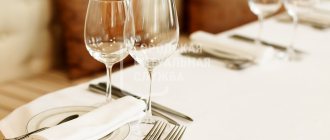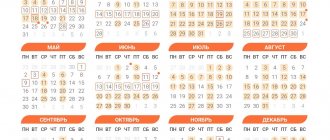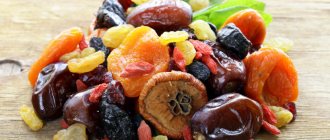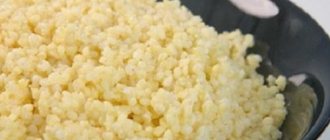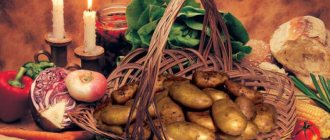Fasting is abstaining from certain foods on special religious days. But this does not mean at all that you need to eat the same food all the time, although many housewives simply get confused about what to cook to diversify the family menu. So, Lent in 2022: recipes for every day.
In fact, fasting days are a great way to improve your culinary skills, learn how to cook healthy, delicious meals, and not panic about it at all. There is one more advantage in preparing Lenten dishes - it is simple and inexpensive. After all, you need the simplest ingredients - cereals and vegetables, fruits, herbs, dried fruits and nuts, and occasionally, on permitted days, fish and seafood. Lent: what are the recipes for every day on fasting days? Read the article!
General recommendations for nutrition during Lent
First of all, it should be noted that meals on fasting days vary in degree of complexity. For example, there are days when the Church recommends that those who are able to do so abstain from eating food altogether and drink only water. On other days, dry eating (eating foods without vegetable oil) will be recommended. On such days, products that do not undergo heat treatment before consumption are recommended.
But, nevertheless, not everything is so strict - during Lent, hot food is also allowed - vegetable soups and stews, porridges, baked dishes from mushrooms and vegetables, jelly and compotes, fruit drinks and decoctions. But on the lightest days of fasting, you can enjoy fish, seafood, red caviar, add vegetable oil to your dishes, and a little red wine in clean water.
Great Lent 2022: detailed daily nutrition calendar for the laity
| Fasting weeks | 1st week of Lent (07 – 13 March) | 2nd week of Lent (March 14 - 20) |
| Monday | Complete abstinence from food | Dry eating: cold, uncooked plant foods without oil and unheated drinks are allowed. Once a day - in the evening. |
| Tuesday and Thursday | Dry eating: cold, uncooked plant foods without oil and unheated drinks are allowed. Once a day - in the evening | Hot vegetable food cooked without oil is allowed once a day. |
| Wednesday and Friday | Dry eating: cold, uncooked plant foods without oil and unheated drinks are allowed. Once a day - in the evening | Dry eating: cold, uncooked plant foods without oil and unheated drinks are allowed. Once a day - in the evening. |
| Saturday and Sunday | Hot vegetable food with vegetable oil is allowed twice a day. Wine is allowed. | Hot vegetable food with vegetable oil is allowed twice a day. Wine allowed |
| Fasting weeks | 3rd week of Lent (March 21 - March 27) | 4th week of Lent (March 28 - April 3) |
| Monday Wednesday Friday | Dry eating: cold, uncooked plant foods without oil and unheated drinks are allowed. Once a day - in the evening | Dry eating: cold, uncooked plant foods without oil and unheated drinks are allowed. Once a day - in the evening |
| Tuesday and Thursday | Hot vegetable food cooked without oil is allowed once a day. | Hot vegetable food cooked without oil is allowed once a day. |
| Saturday and Sunday | Hot vegetable food with vegetable oil is allowed twice a day. Wine allowed | Hot vegetable food with vegetable oil is allowed twice a day. Wine allowed |
| Fasting weeks | 5th week of Lent (04 - 10 April) | 6th week of Lent (April 11 - 17) |
| Monday Wednesday Friday | Dry eating: cold, uncooked plant foods without oil and unheated drinks are allowed. Once a day - in the evening | Dry eating: cold, uncooked plant foods without oil and unheated drinks are allowed. Once a day - in the evening |
| Tuesday and Thursday | Hot vegetable food cooked without oil is allowed once a day. | Hot vegetable food cooked without oil is allowed once a day. |
| Saturday | Hot vegetable food with vegetable oil is allowed twice a day. Wine is allowed. | Hot vegetable food with vegetable oil is allowed twice a day. Fish roe is allowed. |
| Sunday | Hot vegetable food with vegetable oil is allowed twice a day. Wine is allowed. | Fish dishes allowed |
| Fasting weeks | 7th week of Lent (April 18 - April 23) |
| Monday Tuesday Wednesday | Dry eating: cold, uncooked plant foods without oil and unheated drinks are allowed. Once a day - in the evening |
| Thursday | Hot vegetable food with vegetable oil is allowed twice a day. Wine is allowed. |
| Friday | Complete abstinence from food |
| Saturday | Hot vegetable food cooked without oil is allowed once a day. |
With such a restriction, all the rules of observance of Lent will be observed, and even without going into too much detail, you will be able to follow the path of abstinence and humility of your flesh on special religious days.
Preparing the body for Lent
The basis of fasting days includes such a concept as abstinence from gluttony. We are talking specifically about abstaining from food, and not about exhausting the body by refusing to eat. That is why church ministers remind their parishioners every time that fasting must be within their capabilities, and, of course, it is necessary to prepare for such a diet in advance.
It is worth preparing for Lent in advance, for example, by thinking through the family menu and taking 1-2 fast days a week. And if this becomes a habit throughout the year, it will benefit your body. In addition, during this period you can approach planning a Lenten menu, familiarize yourself with and try new and tasty recipes. When the time of Lent comes, you will not have any problems or questions about what to cook for lunch or dinner for your family.
You should not approach this issue thoughtlessly - otherwise you can cause serious damage to the body, and depression, irritability, and a feeling of dissatisfaction can arise from the feeling of hunger. Then the observance of fasting becomes unbearable and a refusal to fast may occur.
For those who want to avoid such troubles, a consultation with an experienced confessor is necessary; you should definitely tell him about your spiritual and physical well-being, and, of course, ask for a blessing to celebrate Lent.
First week of Lent: what to eat
In 2022, the first week of Lent falls on March 7 - 13; popularly it is also called “Fedorov’s Week.” During this period, it is customary to remember all the deceased of the Orthodox faith and loved ones.
Sample menu for the first week of Lent
- Monday: During the day, it is advisable to refrain from eating food and drink only clean water as needed.
- Tuesday: Warm water and rye bread during the day.
- Wednesday: Fruit salad for breakfast, coarsely chopped fresh vegetables for lunch, vegetables or fruits sprinkled with lemon juice for dinner.
- Thursday: For breakfast, dairy-free porridge with a little salt, for lunch, pureed vegetable soup with herbs, for dinner, stewed vegetables with rice. During the day, compote or jelly, herbal tea.
- Friday: If possible, repeat Tuesday's menu.
- Saturday: For breakfast, buckwheat porridge with onions fried in butter, for lunch, lean vegetable puree soup and potatoes with mushrooms, for dinner, vegetable casserole with salad. During the day, a little wine diluted with water, jelly or fruit drink, compote.
- Sunday: For breakfast, any dairy-free porridge with salt and sugar and a drop of sunflower oil, for lunch, stewed vegetables from dinner and cabbage salad with herbs, for dinner, grilled vegetables and a fruit and vegetable smoothie. Compote, fruit drink, a little diluted wine, green or herbal tea.
Second week of Lent: what to eat
In the second week of Lent, it is customary to remember the parable of the publican and the Pharisees, and also to remember the holy great martyrs and deceased relatives. As for nutrition, it becomes cyclical after the sixth week.
Sample menu for the second week of Lent
- Monday: For breakfast, a portion of chopped raw carrots and a handful of raisins with nuts. For lunch, a salad of raw champignons with a dressing of vinegar and lemon juice with garlic and herbs, a slice of wholemeal bread. For dinner, toast from grain bread with a spread of crushed berries, fruit or vegetable salad. Drink just clean water throughout the day.
- Tuesday: For breakfast, any porridge with the addition of frozen berries or honey, for lunch, mashed potatoes with cabbage and cucumber salad, for the evening, baked mushrooms and 2 apples. You can drink dried fruit compote, green or herbal tea.
- Wednesday: For breakfast, you can make a thick fruit smoothie with bananas and eat a handful of nuts. For lunch, you should treat yourself to a serving of vegetable salad made from root vegetables, with a dressing of herbs and lemon juice. Dinner will be a fruit salad and a handful of dried fruits. During the day, drink fruit drink diluted with water.
- Thursday: Barley porridge without sugar, boiled in water. For lunch, grilled vegetables baked without oil with a slice of toast. For dinner, you can make a salad of baked or fresh vegetables, season with vinegar or lemon juice. Thick jelly will add satiety, and you can drink green or black tea.
- Friday: You cannot use thermally processed food in your diet, so the entire menu consists of fruit or vegetable salads, fruits, nuts and dried fruits.
- Saturday: For breakfast, pea porridge with the addition of onions fried in oil. For lunch, pureed pumpkin soup with croutons. For dinner, you can treat yourself to vinaigrette or stewed vegetables. A little wine diluted with water, tea, herbal infusions, compotes are allowed.
- Sunday: Grated carrot or pumpkin salad, fruit smoothie. For lunch - vegetable soup with cereal, a slice of wholemeal bread. For dinner, vegetables are sliced and baked into a tower shape in the oven with cucumber salad. Cook thick jelly, compote, drink some red church wine.
Potato casserole with mushrooms
In portioned casseroles for those who are not fasting, add finely chopped and quickly fried pork neck.
Potato casserole with mushrooms
4 servings, preparation 1 hour.
What do you need:
- 5–6 large potatoes
- 500 g thawed wild mushrooms
- 200 g champignons
- 1 large red bell pepper
- 1 large onion
- 2 tbsp. l. tomato sauce with herbs
- 1 tbsp. l. soy sauce
- 1 tsp. Sahara
- olive oil
- 1 tsp. dry oregano
- salt, freshly ground black pepper
What to do:
1. Peel the potatoes, cook in salted boiling water until soft, 30 minutes. Drain the broth, leaving 100–150 ml in the pan, add 2–3 tbsp. l. olive oil and mash the potatoes.
2. Mix tomato sauce, soy sauce, 2 tbsp. l. olive oil, sugar, season with salt and pepper.
3. Cut all the mushrooms into small pieces. Peel the sweet peppers and onions, chop finely and fry in oil. Add mushrooms and oregano and sauté until liquid has evaporated. Then pour in the tomato sauce.
4. Grease a baking dish with oil, place mushrooms and vegetables, and top with mashed potatoes. Bake at 180°C for 20 minutes. Serve hot.
Third week of Lent: what to eat
This week, the Orthodox cross is taken out of the altar so that all believers can venerate it. As for nutrition, the menu will resemble the second week, where dry eating alternates with meals of hot lean food.
Sample menu for the third week of Lent
- Monday: For breakfast, fruit smoothie with banana, a slice of lean bread. For lunch, salad with croutons and tomatoes, with a spicy vinegar dressing. For dinner, a salad of beets, carrots, cabbage and herbs, garlic and lemon juice. You are allowed to drink water and green tea.
- Tuesday: For breakfast, hot millet porridge with pumpkin in water with honey. For lunch, lean cabbage soup with tomatoes and herbs, croutons. For dinner, buckwheat cutlets with onions and mushrooms. During the day, orange juice or fruit drink diluted with water.
- Wednesday: For breakfast, a handful of a mixture of dried fruits and nuts, a glass of fruit smoothie. For lunch, champignon salad with garlic and lemon juice dressing, a slice of lean bread. For dinner, a hearty salad of fresh vegetables and herbs. You can only drink clean water.
- Thursday: For breakfast, oatmeal with added sugar and cocoa powder. For lunch, thick lentil soup. For dinner, you can stew potatoes with mushrooms and add sauerkraut, onions and sugar to it.
- Friday: For breakfast, pour cold boiled water over buckwheat in the evening. For lunch, a salad of grated carrots and beets, with a dressing of lemon juice and ginger. For dinner a portion of fruit. You can drink clean water with lemon juice throughout the day.
- Saturday and Sunday: These days are united by the fact that it is allowed to eat hot food with butter, but only in the morning and evening. The menu can be borrowed from the previous diet, and on Sunday you can drink wine diluted with water.
Fourth week of Lent: what to eat
The Middle Cross begins, or in common parlance, the Midsummer of the Holy Pentecost. Another week is called “Laudation”, since on Saturdays they pray to the Most Holy Theotokos.
- Monday: For breakfast, a serving of fresh or thawed berries or a fruit smoothie. For lunch, cabbage salad with carrots and herbs. For dinner, a serving of fresh fruit and a salad of leafy greens with cucumbers and lemon dressing. Black or green tea throughout the day.
- Tuesday: For breakfast, a serving of millet porridge in water with salt and sugar. For lunch, thick pea soup with croutons. In the evening, you should stew vegetables without oil and eat them with sauerkraut or pickled cabbage. Dried fruits compote.
- Wednesday: For breakfast, raw beet salad with lemon juice and seeds. For lunch 2 apples and 2 carrots. For dinner, you should treat yourself to a salad of Chinese cabbage, peas, corn and herbs with lemon juice. You can drink carrot juice or vegetable smoothie.
- Thursday: Hot salad day. For breakfast, you can bake 2 eggplants in the oven with a large tomato, and cut them with herbs and season with vegetable oil. Grilled vegetables will be a good lunch. And in the evening you can bake mushroom caps in the oven with herbs. Don't forget to cook thick jelly.
- Friday: Cold Soup Day. For breakfast you can make it fruity, and for lunch – vegetable. In the evening, for satiety, make a thick smoothie with bananas and enjoy a handful of dried fruits or nuts.
- Saturday: For breakfast, buckwheat porridge with fried mushrooms and onions. For lunch, lean borscht with a slice of whole grain bread. For dinner, fried potatoes and salad. During the day you can drink diluted fruit drink.
- Sunday: Today is the Annunciation, so you can eat fish during the day. For breakfast, you can treat yourself to a sandwich made from coarse gray bread with lightly salted fish. For lunch, cook fish soup with millet and vegetables, and in the evening bake a piece of lean fish and potatoes in the oven. You are also allowed to drink wine and drink apple compote throughout the day.
Grilled vegetables with mustard sauce
Meat eaters can add smoked chicken or turkey to this salad.
Grilled vegetables with mustard sauce
4 servings, preparation: 30 min.
What do you need:
- 4 young zucchini
- 4 large colorful peppers
- 200 g cherry tomatoes
- 400 g green beans
- 4 tbsp. l. olive oil
- 1 tbsp. l. lemon juice
- salt
For the sauce:
- 3 tbsp. l. Dijon mustard
- juice and zest of 1 orange
- 4 cloves garlic
- 2 shallots
- 4 tbsp. l. olive oil
- salt, freshly ground black pepper
What to do:
1. Peel the peppers and, if necessary, zucchini, cut into large pieces, place in a bowl, add cherry tomatoes, salt, sprinkle with lemon juice and olive oil.
2. Preheat the oven with grill to 220°C. Place vegetables on a parchment-lined baking sheet and place under the broiler; fry until golden brown.
3. Boil beans in salted bottled water for 3 minutes. Place on a sieve, rinse with cold water, and dry.
4. For the sauce, crush the garlic, peel and chop. Peel the shallots and chop as finely as possible. Combine shallots, garlic, orange juice and zest. Add mustard, pour in olive oil, salt and pepper, and beat with a fork.
5. Mix the vegetables with the beans, shake the sauce, pour over the vegetables and serve immediately.
THURSDAY
Lunch
Fifth week of Lent: what to eat
This week, all churches are holding services in honor of Mary of Egypt.
- Monday: For breakfast, pour buckwheat or oatmeal without sugar in cold water in the evening, you can add a little salt. For lunch, a salad with greens from vegetables that are available. For dinner, you can make a fruit salad or a thick smoothie with nuts and lemon juice. You can drink cold green tea throughout the day.
- Tuesday: For breakfast you should cook vegetables stewed without oil with lettuce. For lunch, tomato puree soup with croutons. For dinner, cabbage rolls with mushrooms and pickles. During the day, drink fruit drinks, compotes or herbal decoctions.
- Wednesday: Oatmeal with water, with added salt and sugar, optional toast from lean bread. For lunch, mushroom soup with vegetables and noodles (without adding eggs). For dinner, a serving of vinaigrette and boiled jacket potatoes with coarse salt. Green tea throughout the day.
- Thursday: For breakfast, a vegetable sandwich without heat treatment, a slice of bread. For lunch, a salad of sauerkraut with onions and sugar and 2 sweet apples. For dinner, buckwheat and cucumber salad soaked in cold water in the morning. Dried fruits compote.
- Friday: Fruit day. During the day, you can eat fresh or frozen fruits and berries in the form of thick whipped drinks, salads, or simply in their pure form. You can also include dried fruits and walnuts in the menu for satiety. It is best to drink plain water or mint infusion during the day.
- Saturday: For breakfast, a portion of any porridge on water with sugar and salt, you can add fruits, seeds or honey. For lunch, lean bean soup with a slice of black bread with seeds. For dinner, halves of baked potatoes with spices, tomato and red onion salad. Compote or jelly during the day.
- Sunday: Millet pancakes with flour and sweet fruits, a cup of green tea with jasmine. For lunch, a serving of pureed vegetable soup with croutons. For dinner you can indulge in some wine and lentil cutlets. In the afternoon – peach juice diluted with water.
Lenten oatmeal cutlets
If you want to make your main dish more nutritious, then take oatmeal.
- 1 cup of cereal. Of course, we only take whole grains that have undergone minimal processing. They contain more nutrients and vitamins. Pour boiling water - 0.5 cups and let them swell.
- 1 medium potato. Wash, clean and grate on a medium grater. It will give our dish the necessary juiciness and softness.
- Onion and garlic. For taste, be sure to add a little onion and a clove of garlic. You can finely chop or grind in a blender.
- Salt and spices to your taste.
Mix all ingredients and form cutlets. To get a crust, you can roll them in breadcrumbs.
Holy Week of Lent: What to Eat
At the end of this week, on Saturday, Christ was crucified on the cross, and on Sunday, all Orthodox Christians around the world will celebrate Easter. In terms of nutrition, it is considered the most strict week in Lent, similar to the first, but on Friday you are not allowed to eat anything, but only drink clean water as needed.
- Monday: For breakfast, banana and apple salad with honey and lemon juice. For lunch, cold tomato soup with cucumbers and sweet peppers. For dinner, cabbage salad with apple, carrots and herbs, a portion of nuts. Pure water with lemon juice.
- Tuesday: For breakfast, dried fruits, nuts and 2 bananas. For lunch, lettuce with cucumbers and tomatoes, herbs and lemon juice. For dinner, a thick fruit or vegetable smoothie, or just sliced fruit.
- Wednesday: Carrot salad with raisins for breakfast. For lunch, cabbage and cucumber salad with a drop of vinegar and herbs. In the evening, blend vegetables and fruits with juice to make a thick smoothie, adding sunflower seeds when serving.
- Thursday: For breakfast, any porridge with salt and butter, but without sugar. For lunch, Lenten pickle soup with rice or pearl barley, a slice of whole grain bread. For dinner, any baked vegetables with salad and a little wine. Mint and chamomile tea during the day.
- Friday: During the day you are allowed to drink only clean water, it can be heated a little.
- Saturday : The last day of Lent, so you can treat yourself to sweet millet porridge with water for breakfast, but with the addition of honey. For lunch - thick pea soup with fried vegetables. For dinner - fried potatoes with onions and mushrooms, cucumber and tomato salad with onions and greens, vinegar dressing. During the day you can drink compotes, green or black tea.
- Sunday: Easter has arrived and you can return to your usual menu, but protein products of animal origin should be introduced into the diet with caution, in small portions.
General rules
Fasting involves cleansing the soul and body.
Because Christians' observance of fasts is more than food rules. Most days of the year are fast days. This is a period of abstinence and testing for believers when temptations and temptations of various kinds arise. Today we will talk about fasting for lay people who do not adhere to strict instructions for believers. Some are going to fast for the first time, so a complete abstinence from food and fasting are not provided for them, but only a reasonable limitation of it.
Compliance with even long fasts (there are four of them), if they are not initially contraindicated for health reasons, cannot harm a person, which is why nutritionists speak positively about fasting. Vegetarian nutrition is not permanent in Orthodoxy - only temporary and intermittent. Outside of fasting days, it is not forbidden to eat eggs, dairy and other products of animal origin; it is obligatory to eat fish, which, along with vegetable oils, according to the instructions of the Church, is considered fast food. Fish has 5 times less connective tissue, so it cooks quickly and is easier to digest in the digestive tract, and its protein is better absorbed.
Fish oils are very useful; they have biological value because they contain polyunsaturated fatty acids (PUFAs), which are important in the dietary prevention of many diseases. Horse mackerel, herring, mackerel, sardine, capelin, notothenia, tuna, salmon, and fish liver are rich in PUFAs.
Temporary deviations from a balanced diet are physiological and necessary to maintain the activity of organs and systems that ensure the absorption of food. According to research by the US National Academy of Nutrition, the system of alternating consumption of meat and vegetarian foods is rational, since the digestive and immune systems receive training and comprehensive health improvement.
A fasting diet excludes meat and animal fats, milk and eggs, confectionery products containing them, sweets, and baked goods. Orthodox cuisine for several weeks includes only plant foods: all vegetables and fruits, soy, buckwheat, rice, legumes, chickpeas, mung bean, mushrooms, peas, seitan, quinoa.
Avoiding food of animal origin is beneficial for the body. Switching to plant foods helps normalize metabolism, reduce cholesterol , restore intestinal microflora and its evacuation function. During the elimination of fatty heavy foods, the body rebuilds its metabolism and during fasting, many manage to normalize their weight.
At the same time, the body is cleansed and gets rid of toxins , cholesterol and lipids, metabolic products, since plant foods are a source of fiber, which acts as a sorbent. Following this diet improves gallbladder function and intestinal motor function - constipation , if such a problem existed.
The Orthodox nutrition system is hypoallergenic. This was noted when observing patients suffering from bronchial asthma , who experienced a decrease in the number of attacks during fasting.
A proper diet during fasting should be varied, then a deficiency of vitamins and minerals will not arise. The most important problem is the lack of protein in the diet, which needs to be replenished by daily consumption of legumes (lentils, peas, soybeans, beans), as well as mushrooms and cereals.
Vegetarian dishes are often prepared from soy, which is superior in protein content to meat and therefore takes first place in this regard. The necessary vitamin B12 is found in sprouted wheat, greens, fish, caviar and seafood (they are allowed during all fasts, but on certain days).
Fish is an almost complete replacement for meat, as it contains enough protein, calcium and vitamins, but contains less iron. Fish must be chosen and cooked correctly. You should give up expensive varieties of fish and prefer low-fat ones: pollock, cod, blue whiting, haddock, hake. It can be boiled or stewed without adding oil, sauces, or various dressings. The diet can be supplemented with seafood: squid, shrimp, mussels and seaweed.
Iron, although in small quantities, is found in vegetables, fruits and cereals: beans, peas, green onions, green vegetables, radishes, beets, tomatoes, watercress, spinach, parsley, pumpkin, millet, buckwheat, pearl barley, barley, oatmeal, brown rice, apples, cherries, pears, persimmons, pomegranates, black currants, figs, nuts, plums, strawberries, raspberries.
The diet of a fasting person should include nuts, sunflower and pumpkin seeds, a variety of vegetable oils (olive, sesame, flaxseed, cedar, pumpkin), which cover the body's need for fats. Soybean oil, obtained from natural soybeans, is a source of vitamins, lecithin .
Nuts contain 15% protein, but fully provide essential amino acids. They are quite nutritious and satiate for a long time, but due to their high fat content they may be poorly tolerated by people with pancreatic enzymatic insufficiency.
The strictest fast and the longest one is Lent . Its duration is 40 days, and with Holy Week - 48 days. It will be difficult for an unprepared person to withstand strict restrictions. The Orthodox prescription recommends going without food for the first two and last days, and then alternating days of dry eating without vegetable oil and days with cooked food without oil.
During the days of Lent, the use of vegetable oil is allowed only on weekends along with boiled food, and fish - twice during the entire period ( Palm Sunday and the Annunciation ); on Lazarus Saturday you can eat fish caviar.
If you decide to strictly adhere to Lent, you can study the Orthodox nutrition calendar, which details the foods and methods of preparing them for 40 days. If we consider it by day, then on Mondays, Wednesdays and Fridays dry food is provided (brown bread, raw fruits and vegetables, compotes, water). On Thursdays and Tuesdays, hot cooked food without vegetable oil (porridge, soups, stewed vegetables, legumes) is allowed. On Sundays and Saturdays - boiled food in vegetable oil.
Having chosen such a diet, try to chew raw food well - this will facilitate its further digestion and relieve discomfort in the stomach and intestines.
There is a nutrition calendar for every day according to a relaxed menu, which is more suitable for the laity. It excludes raw food and all days there is cooked food (soups, cereals, stewed and boiled vegetables), which on certain days is prepared with or without butter.
If a person lives a full church life and often receives communion and performs established fasts, then there is no need to impose additional fasts on him before confession and subsequent communion. There is no such requirement in the canons; they only talk about fasting on Wednesdays and Fridays. However, according to Russian custom, there is a tradition of fasting for three days before Communion , especially when it occurs very rarely (one to four times a year).
Those who receive communion less than twice a month or do not fast on Wednesday and Friday are recommended to fast for three days before receiving communion. This means eating animal foods, eating lean foods in moderation (only to fill you up), and not drinking alcohol. Those who resort to Communion every Sunday can only fast on Wednesday and Friday, and not eat meat dishes on Saturday. 12 hours before communion, do not eat or drink anything. Before confession without communion (it does not have to follow after it), you don’t have to fast. You can confess at any time when there is a need to confess sins and repent.
Nowadays, fasting is often considered as a fasting diet or a method of losing weight. You need to know that fasting is not always effective in terms of weight loss. Often, many people, refusing food of animal origin, experience hunger. To overcome it, the consumption of carbohydrates is increased: bread with vegetable oil, lean pastries, pasta, bread with honey or jam as dessert, fruit, sweet tea.
Their excessive use and excess in the diet can cause metabolic disorders and lead to weight gain by the end of the fast. How to combine healthy fasting and weight loss?
A fasting diet for weight loss should limit cereals (porridge is allowed once a day and in the first half of the day), as well as nuts (no more than 10 pieces per day), since they are quite high in calories and are not suitable for those who are trying to lose weight. The basis of the diet should be vegetables, mushrooms, legumes, fruits, seaweed and low-calorie soy products (tofu, soy milk and soy yogurt). Protein products of plant origin must be present in the diet, since fasting lasts 48 days. Legumes and soy products should be included daily.
After the post
Whatever nutrition option you choose, after fasting you need to observe moderation in food in order to gradually bring the body back to its usual diet. During this time, the body has become unaccustomed to digesting and assimilating meat foods and has rebuilt the functioning of the gastrointestinal tract.
First, egg whites are introduced into the diet - they are considered the easiest to digest. Then - dairy proteins, chicken and lean pork. Difficult-to-digest proteins of lamb, beef and goose meat are introduced last (a week after Easter ). It is best to cook from lean, boiled meat, eat boiled fish and continue to use vegetable oil and stewed vegetables.
Meals should be fractional; large amounts of food should not be abused. If a person has strictly observed fasting, one should limit alcoholic beverages and give up fatty and smoked foods. This is precisely the main mistake of people who believe that they have endured fasting with dignity and that on Easter day they can treat themselves to previously forbidden food. This leads to exacerbation of diseases of the gastrointestinal tract, primarily pancreatitis .
Recipes for Lent - simple and accessible
The undeniable advantage of Lenten dishes is the ease of preparation and the simplest products that can be found in any home - fresh and salted (fermented or pickled) vegetables, herbs and cereals, flour and homemade fruit preparations for making desserts.
Simple Lenten Salads
You can prepare simple, but nevertheless tasty salads on fasting days in 10-15 minutes, because they are based on the most common vegetables, which often do not require heat treatment.
With champignons
A very hearty salad with potatoes, green peas and mushrooms can serve as a complete meal for lunch or dinner on days when vegetable oil for dressing is allowed.
To prepare you will need:
- 3 potatoes;
- 200 gr. fresh or pickled champignons;
- 2 onions;
- 85 gr. canned green peas;
- A bunch of green onions;
- Salt and pepper.
Preparation:
- Peel the onions and cut into small cubes. Fry until golden brown.
- While the onions are frying, you need to chop the mushrooms; they can be cut into cubes or thin slices.
- Add the mushrooms to the onions, add salt and pepper and heat over medium heat for 5-7 minutes until crispy.
- Boil peeled potato tubers in their skins, cool and peel. Cut into large cubes and place in a salad bowl.
- Add green peas and chopped green onions to the potatoes.
- Place the fried mushrooms and onions in a bowl, add salt and black pepper to taste, stir.
- When serving, you can sprinkle each serving with an additional portion of vegetable oil with the smell of seeds.
From Chinese cabbage
And this salad is perfect on those days when the use of vegetable oil is prohibited.
To prepare you will need:
- A small head of Chinese cabbage;
- Large fresh cucumber;
- 2 tomatoes;
- Bell pepper;
- A bunch of greenery;
- Salt and pepper;
- Sweet red onion;
- Lemon juice or apple cider vinegar.
Preparation:
- Peel the sweet onions and cut into thin, almost transparent half rings.
- Chop the cabbage, cut the sweet pepper into cubes or thin strips. Place the chopped vegetables in a salad bowl.
- Cut tomatoes into slices, cut fresh cucumber into half rings or cubes and chop fresh herbs.
- Mix all ingredients, season to taste with salt and pepper and sprinkle with lemon or lime juice. Let it brew and you can serve.
Hot Lenten dishes
During Lent, first courses should be rich in a wide variety of vegetables with the addition of cereals or legumes. You can also serve them in the form of a puree soup, with the addition of nuts, seeds or croutons of whole grain bread.
Borscht with beans
Do you think borscht cooked without meat will be tasteless? This opinion is deceptive, because for satiety you can add beans to it, and prunes will help add flavor and piquancy to the dish.
To prepare you will need:
- 300 gr. fresh cabbage;
- 300 gr. sauerkraut;
- 2-3 potatoes;
- 1 small carrot;
- 2 oblong beets;
- A handful of dry white beans;
- Tomato paste or puree;
- A handful of prunes;
- 4 cloves of garlic;
- A bunch of fresh herbs;
- Salt, spices and seasonings;
- A bunch of greenery.
Preparation:
- Cut the peeled potatoes into large cubes and add water to cook.
- Chop fresh cabbage, cut sauerkraut if it is long.
- Peel the beets, grate them on a coarse grater or cut them into strips. Fry with the addition of tomato paste or puree.
- Separately sauté onions and carrots, combine with beets.
- Separately cook the white beans until tender or use a canned product - in this case, the liquid from the can can be sent into the broth along with it. Add to borscht.
- As soon as the potatoes become soft, add cabbage and fried root vegetables, add salt to taste. Let the borscht boil and cook over medium heat for 5-7 minutes.
- As soon as all the ingredients in the borscht are ready, all that remains is to check the salt balance, add chopped garlic and herbs, pre-steamed prunes and turn off the stove.
- It is recommended to wrap the pan so that the lean borscht with beans infuses and becomes more flavorful.
Pumpkin soup
Thick pumpkin soup can be served as a puree soup, complemented with an aperitif of dried pumpkin seeds.
To prepare you will need:
- 1 kg fresh or frozen pumpkin;
- 2 carrots;
- 3 potatoes;
- Large onion;
- Pumpkin seeds;
- Salt and black pepper.
Preparation:
- Pour vegetable oil into a saucepan with a thick bottom and walls.
- Peel the onion and cut it into small cubes, fry until golden brown directly in the pan.
- While the onions are fried, you need to peel and cut the carrots into half rings and fry them together with the onions.
- Add diced potatoes and pumpkin to the carrots and sauté until the vegetables become golden and crispy.
- Pour the required amount of water into the pan, add salt and black pepper and cook over medium heat until tender.
- Grind the soup with an immersion blender until pureed, pour into bowls, and garnish with pumpkin seeds.
Stuffed champignons
If you manage to buy large champignons during Lent, you can stuff them with any filling and bake them in the oven. This dish will pleasantly diversify the vegetable table of believing parishioners.
To prepare you will need:
- 5-6 large champignons;
- A handful of steamed rice;
- 3 sprigs of dill or parsley;
- 1 sweet onion;
- 1 small carrot;
- Salt and pepper.
Preparation:
- Wash and dry the mushrooms, remove their stems and chop.
- Cut the onion into small cubes and fry with chopped mushroom stems and finely grated carrots until golden brown.
- Cook the rice until tender, mix in a frying pan with fried vegetables, add salt and pepper to taste and add chopped dill.
- Stuff the mushroom caps with a generous portion of the filling, place them in a greased pan and bake until golden brown in an oven preheated to 180 C for 15 minutes.
- You can serve it hot or after the champignons have cooled, be sure to garnish with salad leaves or sprigs of herbs.
Lenten baking
Even during Lent, you can bake delicious homemade baked goods at home from simple ingredients without adding eggs or milk, such as cookies made from ground flakes or a delicate cake made from cooked cereal with a layer of homemade jam.
Oatmeal cookies with nuts and dried fruits
During Lent, you can treat yourself and your family to delicious Lenten oatmeal cookies, which are prepared without eggs and milk, but are nevertheless tasty, aromatic and crispy.
To prepare you will need:
- 325 gr. oatmeal;
- 50 gr. raisins;
- 200 gr. apple or peach jam;
- A generous handful of nuts;
- 55 ml. vegetable oil;
- 2 tbsp. spoons of flour;
- A pinch of fine salt.
Preparation:
- Oatmeal flakes need to be dried a little in a dry frying pan so that they change their color and a subtle nutty aroma floats.
- Mix the flakes with flour, add salt and raisins, crushed nuts and jam. Mix the mixture thoroughly and add vegetable oil.
- Line a baking sheet with parchment paper, form the dough into balls with wet hands, place them on the baking sheet and lightly press them with your hands, flattening them.
- Preheat the oven to 185 C, bake the cookies for 15-18 minutes. As soon as they turn golden and the match remains dry, it means the homemade cakes are completely ready.
- The cookies need to be taken out and cooled, and then served with mint tea, honey and lemon.
Natalia
Author
Ask a Question
As you can see from the article itself and the recipes, eating during Lent can be not only healthy, but also varied. Simple and affordable dishes will help cleanse the body of toxins and toxins, saturate it with minerals, vitamins and nutrients. And most importantly, they will rid your body and your soul of everything unnecessary and unnecessary! Fast for your health!
Health to you and your loved ones! Natalya Belokopytova.
Lenten beet cutlets
Beetroot lovers can make cutlets from this healthy and tasty vegetable. Don't forget that beets are an ideal source of fiber; they cleanse our intestines and remove harmful toxins.
- 3 medium beets. We wash it and let it cook until done. Peel the skin and grate it on a medium grater. Here is ready-made vegetarian minced meat! Remember that 100 grams of this minced meat contains only 47 calories!
- 100 grams of semolina.
- Salt and pepper to taste.
- Any greens. You can add dill and parsley.
Add all the ingredients to the minced beetroot and mix thoroughly. Since we are following a diet or proper nutrition, we will cook this dish in the oven. Thanks to semolina, you can be sure that the cutlets will not fall apart. Place them on a baking sheet (don't forget the parchment) and put them in the oven for 10 minutes. Temperature 180−200 degrees. You can also use a double boiler if desired.
